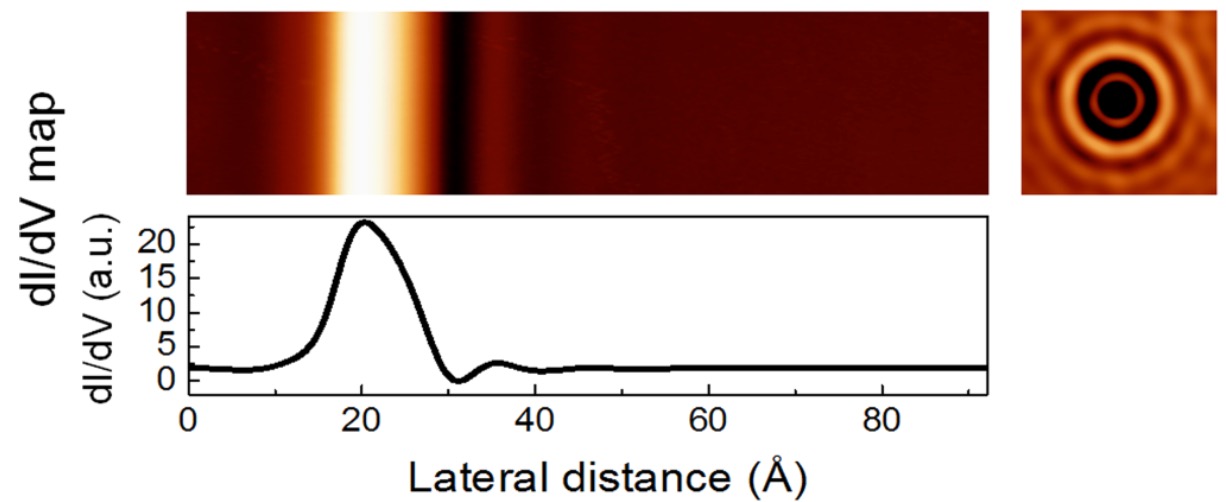The quantum dynamics of electrons in bulk states is investigated by scanning tunneling microscopy and spectroscopy on a Ag(100) surface. By measuring conductance maps above a threshold voltage, we observe standing waves at step edges and defects. We interpret these to originate from electrons in a bulk band edge at the point. From the spatially decaying waves, the wave vector and the quantum coherence parameters, coherence length, lifetime, and linewidth are determined as a function of energy. We measure a coherence length of about 5-7 Ang, which is order of magnitudes lower than typically observed for surface or image-potential states. The energy of the band edge is extracted from the dispersion relation and agrees with the peak measured in scanning tunneling spectra at 1.9 eV above the Fermi energy. Theoretical calculations confirm the nature of the state elucidating the experimental findings.

The quantum dynamics of electrons in bulk states is investigated by scanning tunneling microscopy and spectroscopy on a Ag(100) surface. By measuring conductance maps above a threshold voltage, we observe standing waves at step edges and defects. We interpret these to originate from electrons in a bulk band edge at the point. From the spatially decaying waves, the wave vector and the quantum coherence parameters, coherence length, lifetime, and linewidth are determined as a function of energy. We measure a coherence length of about 5-7 Ang, which is order of magnitudes lower than typically observed for surface or image-potential states. The energy of the band edge is extracted from the dispersion relation and agrees with the peak measured in scanning tunneling spectra at 1.9 eV above the Fermi energy. Theoretical calculations confirm the nature of the state elucidating the experimental findings.
